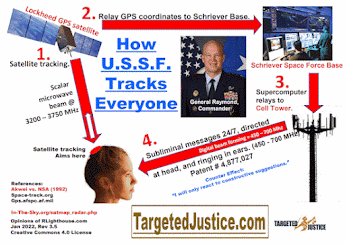Patent No. 5729205 Automatic transmission system of an emergency signal and a method thereof using a driver's brainwave
Patent No. 5729205
Automatic transmission system of an emergency signal and a method thereof using a driver's brainwave (Kwon, Mar 17, 1998)
Abstract
An automatic transmission system of an emergency signal and a method thereof using a driver's brain wave which enables the police and hospitals, having a network with an earth station, to provide a proper and immediate rescue operation for those involved in an accident by transmitting an emergency signal derived from the driver's brain wave to the earth station via a global positioning system (GPS) satellite if a driver is in critical condition after the accident. The automatic transmission system of an emergency signal using a driver's brain wave includes a brain wave sensing block, an amplifier, an analog/digital converter, a memory, a microcontroller, and a transmission block.
Notes:
BACKGROUND
OF THE INVENTION
1. Field of the Invention
The present invention relates to an automatic transmission system of an emergency
signal and a method thereof using a driver's brain wave. More particularly,
the present invention relates to an automatic transmission system of an emergency
signal and a method thereof using a driver's brain wave which enables the police
and hospitals, having a network with an earth station, to provide a proper and
immediate rescue operation for those involved in an accident by transmitting
an emergency signal derived from the driver's brain wave to the earth station
via a global positioning system (GPS) satellite if the driver is in critical
condition after the accident.
2. Description of the Prior Art
Recently, in the automotive industry, a system has been developed which can
provide information to a driver of the best route to a destination by displaying
the current location of the driver on a map displayed by a liquid crystal panel
mounted to the dashboard or sitting on the driver's seat. The development of
a motor navigation system allows an inexperienced driver or a driver who drives
on unfamiliar roads to more easily operate the motor vehicle.
Use of the above-mentioned motor vehicle navigation system is spreading rapidly
in Japan, and considerable attention is being given to this system as a leading
high technology item of the 21th century in the automotive industry. The widespread
use of the system is in the initial stage, but it is predicted that the system
will be mounted in up to 20% of the motor vehicles manufactured within the next
ten years.
Companies which sell motor vehicles having the navigation system include Nissan
Motor Company, Toyota Motor Company, Matsuda Motor Company and Mitsubishi Motor
Company. Motor vehicles having the navigation system were initially limited
to luxury cars, but recently, Pioneer Motor Company has been selling systems
in the general automotive market, thereby widening the choice range for consumers.
The biggest advantage of the motor vehicle navigation system lies in that the
driver may enjoy driving even when the driver drives on an unfamiliar road.
Maps covering all parts of Japan are included in each of the aforementioned
systems, and display of all map portions can be enlarged or reduced from the
minimum rate of 1:100,000 scale to the maximum rate of 1:10,000 scale by pressing
only one button. In addition, since car service centers, resting places and
various kinds of public services, as well as highways, are indicated in detail,
the driver may find his or her way easily even when he or she goes astray at
night.
The above-mentioned motor vehicle navigation system may use a sensor method
or a Global Positioning System (GPS) method using an artificial satellite.
The Nissan Motor Company and the Mitsubishi Motor Company systems use the sensor
method by which the current location of the motor vehicle is perceived by sensing
the driving direction and the driving distance of the motor vehicle by a sensor.
However, the sensor method has a disadvantage in that errors occur at an interval
of 100 meters when driving long distances.
Accordingly, the Matsuda Motor Company uses the GPS method using a broadcast
signal of artificial satellites launched by the U.S. Government, which is then
applied to the sensor method to compensate for the errors occurring in the sensor
method. Errors arising under the GPS method occur at an interval of 30 to 50
meters.
GPS is the global positioning system using artificial satellites. GPS has been
under development by the U.S. Government for military use for about 20 years
and now is being applied for commercial purposes. The data necessary for position
measurement is modulated by a frequency diffusion method and a modulated signal
of 1575.42 MHz is transmitted from the satellite orbiting the earth. A receiver,
that is, an earth station, receives the signal from a plurality of satellites
(three satellites in the case of two-dimensional position measurement, and four
satellites in the case of three-dimensional position measurement), and calculates
the time taken for the signal to reach the earth station by a computer, thereby
making it possible to obtain the current location of the earth station.
Presently, sixteen satellites orbit the earth, and the two-dimensional position
measurement is possible for 22 hours a day. However, 24 satellites will be launched,
including spare satellites, and three-dimensional position measurement for use
24 hours a day will be available when the installation of GPS is finished.
As described above, the motor vehicle navigation system using the GPS satellite
enables the driver to reach a destination safely by receiving the signal from
the satellite using a GPS receiver mounted in the motor vehicle, perceiving
the current location of the driver, and indicating the current location of the
driver on the map. The accuracy of the GPS receiver depends on a program of
a microcomputer, where the architecture of each program is kept confidential
by each respective motor company.
As the motor vehicle navigation system using the GPS is gradually being applied
for commercial purposes, the automotive industry is focusing on the development
of applied products relevant to the GPS to meet the needs of consumers.
For example, a problem exists when there is no one around who can immediately
notify hospitals or the police of a driver who is in critical condition after
an accident. The problem is more serious when the location of the accident is
in a location that is not frequented by other people.
SUMMARY OF THE INVENTION
Accordingly, the object of the present invention is to provide an automatic
transmission system of an emergency signal and a method thereof using a driver's
brain wave which enables the police and hospitals, having a network with an
earth station, to provide a proper and immediate rescue operation for those
involved in an accident by transmitting an emergency signal derived from the
driver's brain wave to the earth station via a global positioning system (GPS)
satellite if the driver is in critical condition after the accident to substantially
obviate one or more of the problems due to limitations and disadvantages of
the prior art.
To achieve the object and in accordance with the purpose of the invention, an
automatic transmission system of an emergency signal using a human driver's
brain wave includes a brain wave sensing block for sensing a brain wave generated
from the driver and converting the brain wave into an electric brain wave signal;
an amplifier for amplifying the electric brain wave signal inputted from the
brain wave sensing block; an analog/digital converter for converting the analog
brain wave signal inputted from the amplifier into a digital brain wave signal;
a memory in which a unique type of brain wave, generated when the life of a
driver is in danger, is digitized and stored as the reference brain wave emergency
signal; a micro-controller for comparing the brain wave signal inputted from
the analog/digital converter with the reference brain wave emergency signal
stored in the memory, and producing an information signal about the current
location of an accident together with an information signal about an emergency
when the life of the driver is in danger; and a transmission block for transmitting
the information signal about the emergency and the information signal about
the current location of the accident by loading the information signals on a
carrier signal of a high frequency.
According to another aspect of the present invention, a method for controlling
the automatic transmission of an emergency signal using a driver's brain wave
comprises the steps of initializing all system variables when electrical power
is applied; determining whether a selection switch is turned ON; reading a brain
wave sensing signal when the selection switch is turned ON; determining whether
the life of a driver is in danger after comparing the brain wave sensing signal
with a reference brain wave emergency signal stored in a memory; and transmitting
a wireless signal about an emergency when the life of the driver is in danger.
Additional objects and advantages of the invention are set forth in part in
the description which follows, and in part will be obvious from the description,
or may be learned by practice of the invention. The objects and advantages of
the invention will be realized and attained by means of the elements and combinations
particularly pointed out in the appended claims.
------------------------------------------
As
described above, the effect of the present invention lies in that the automatic
transmission system of an emergency signal and a method thereof using a driver's
brain wave which enables the police and the hospitals, having the network with
the earth station, to provide the proper and immediate rescue operation for
those involved in the accident by transmitting the emergency signal derived
from the driver's brain wave to the earth station via the GPS satellite if the
driver is in critical condition after the accident.
Other embodiments of the invention will be apparent to the skilled in the art
from consideration of the specification and practice of the invention disclosed
herein. It is intended that the specification and examples be considered as
exemplary only, with the true scope and spirit of the invention being indicated
by the following claims.






Comments